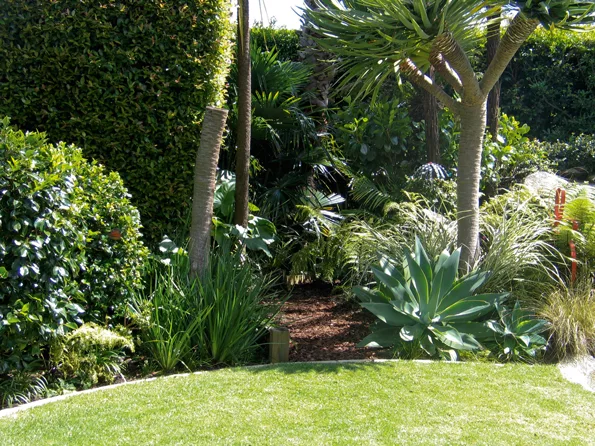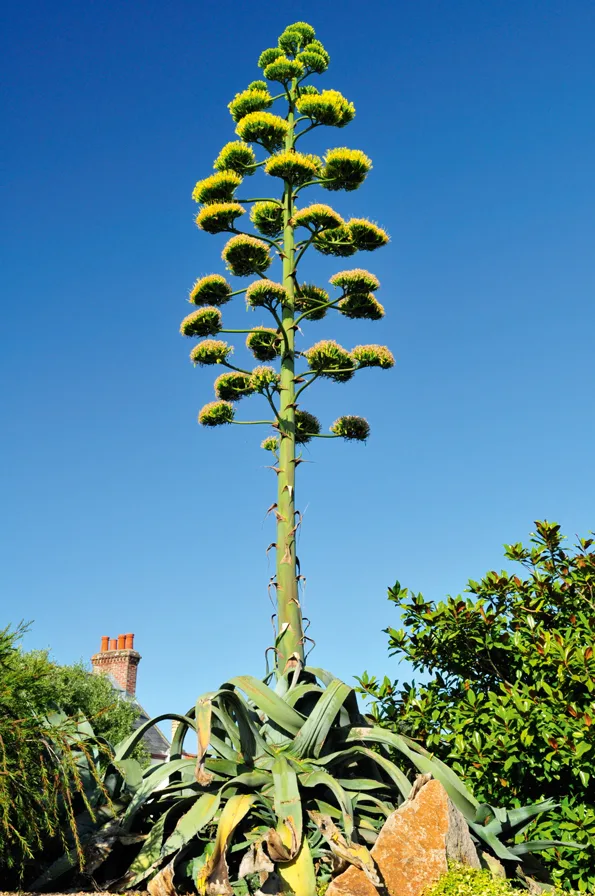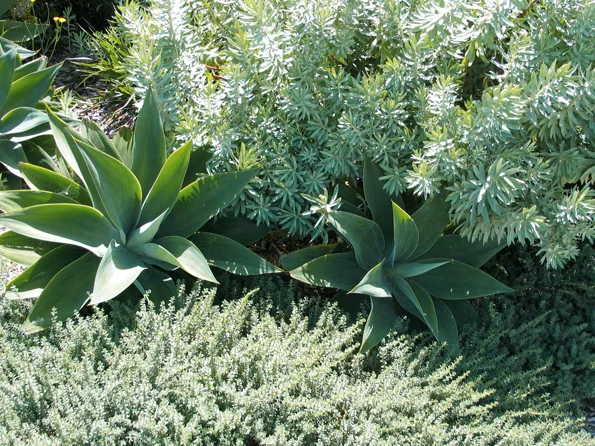It’s a little embarrassing to be extolling the virtues of agave when I’ve often been quite rude about their use (or overuse) in the agave/riverstone obsession we experienced at the turn of the century. I had one (an agave, not an obsession) more recently than that – the relic of an older garden it had seriously outgrown. I unceremoniously dragged it out 18 months ago and stashed it behind a fence, hoping it would die before I had to find another place for it.
It didn’t. It sat there on top of the ground through two floods and a drought, and looks as healthy today as it did when I took it out. It’s also produced a number of pups – all this without any bit of attention. So I have been forced to take a new look at agave because anything that tenacious doesn’t deserve to be trashed.
Over 300 species of agave have been described, but only about 200 are currently recognised. Many are bat-pollinated – not that I’ve seen a lot of bats around mine – and produce musky perfumes as attractants. Others produce sweet odours to attract insects.

It’s a handy thing, an agave plant. Sisal (Agave sisalana) is an agave that yields a stiff fibre and is used to make clothing. The carbohydrates stored in the core of several species of agave were fermented by South Americans to make a beverage called pulque, which was used in religious ceremonies.
Distillation of a similar ferment, made from the developing flower bud, is the basis for modern production of Mezcal. And, of course, there’s tequila. It is quite a multifunctional plant that should surely be the darling of the permaculturalists.
I don’t plan to make tequila and neither am I about to re-create a riverstone garden to accommodate my agave, so I’ve been looking at how such a beast can be incorporated into a relaxed, subtropical garden without taking centre stage.
Agaves always look adorable when they’re little, and it’s easy to grab a bunch of pups from a friend and plant them as a border or in a clump. But like other sorts of pups, they turn into rambunctious nutters about ten times their original size and can ruin your garden.
A case in point is a woman in Timaru who bought a house with an agave in the garden. She was stunned when her agave, after 45 years of maintaining a relatively normal size, suddenly shot up to seven or eight metres high. The particular variety is called the Century Plant. It can take anywhere from 30 to 80 years for the plant to flower, after which it will die. It is sad to build up to something for so long and then die as soon as it happens.

New pups sometimes sprout from the dead stem, but you might not be hoping for that. My agave is the more common attenuata. It is said to grow about 1 x 1m when given full sun, a frost-free environment, well-drained soil, a bit of compost and the occasional feed of low nitrogen fertiliser. Since it’s already one and a half metres high, I can’t imagine what it’s going to do if I nurture it.
Fortunately, agave are incredibly versatile, and, it must be acknowledged, they make a big impact in the garden. They marry beautifully with rocks (rocks, not riverstones) and grasses, and alongside water. However, because many varieties tend to grow on a long and not very beautiful stalk – doing a fine imitation of ET – it’s not a bad idea to plant them behind a rock, leaning over a low wall, or with something in the foreground as camouflage.
If you’re going to plant them alongside pathways, either choose varieties that don’t have spikes, or snip the tips off every now and then so children and animals don’t lose an eye. On the plus side, if your level of enthusiasm for garden maintenance is only a couple of hours every few months, this is your baby. Keeping them tidy involves pulling the older, dead, browning leaves off from the bottom of the trunk and clearing away any other vegetation that has accumulated around the base.
Occasionally, the leaves pick up debris, which is easily washed off by a quick onceover with the car brush when you’re giving your car a bimonthly wash. Generally, they’re not bothered by pests, although rabbits might have a nibble. In the US, they’re attacked by the Agave Snout Weevil – a glossy, black, beetle-like insect with a pointed snout. It’s not likely to be a bother here, but I couldn’t resist mentioning it because it sounds a lot more interesting than slugs and snails.

**Tequila
**Before you start chopping up your agave and squeezing out the juice to make tequila, you need to know that it’s only the blue agave that yields the right stuff – and it takes about 10 years to mature. Anyway, agave enthusiast Terry Knight, owner-operator of Schnapp Dragon Distillery in Takaka, has beaten you to it. He spent hours researching recipes and trying out various brews, and eventually produced blue agave spirit by steam cooking the plants in his oven for three days before crushing them. Then, he brewed the mashed plants into a beer-like substance which was distilled into pure blue agave spirit – tequila.
Terry started growing the plants 16 years ago from seeds bought overseas from a French collector – the Mexicans were very reluctant to part with theirs. He’s since been busy propagating them for a 7000-plant plantation that’ll initially produce 6000 bottles a year. To make tequila, the leaves are hacked off and only the heart of the plant is used. The juice is fermented and distilled two – sometimes three – times to make tequila.
While the liquid may taste like tequila, the name is banned outside Mexico in the same way champagne production is restricted to France. So Terry has called his version TeKiwi – as you would.











